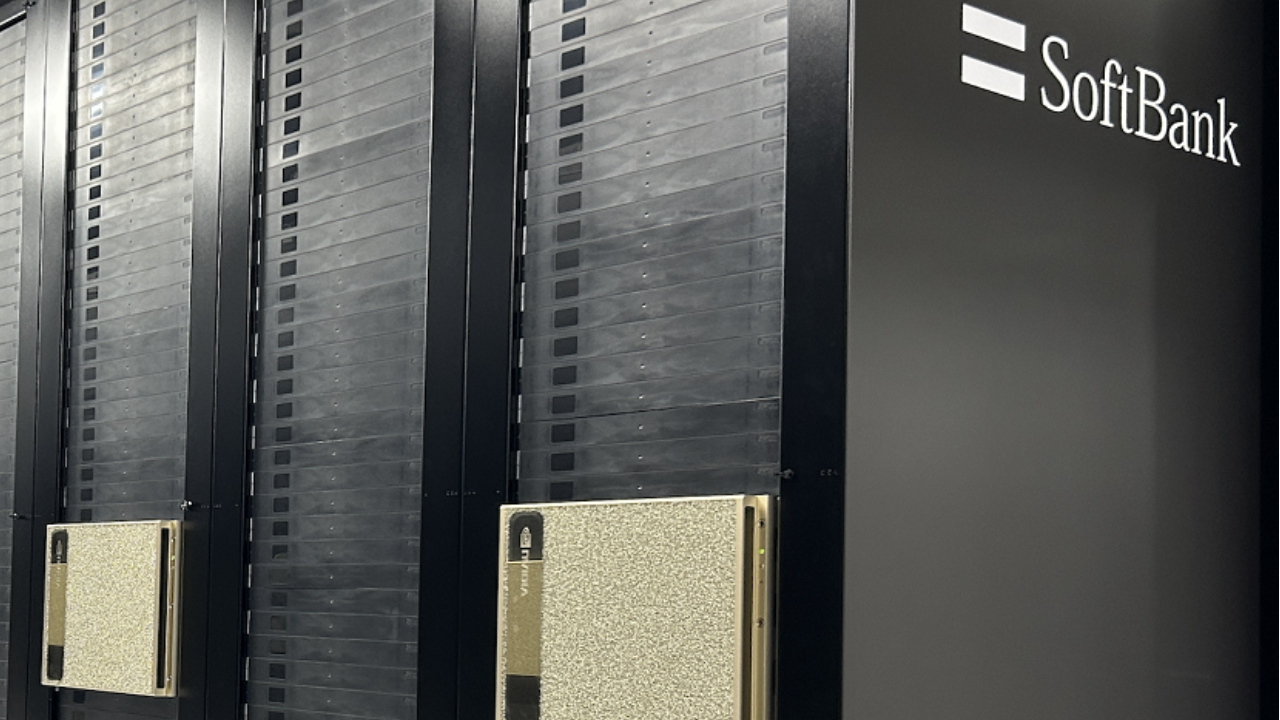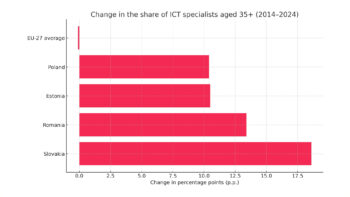In today’s fast-paced world of 3D printing, innovation and sustainability are becoming key elements leading to successful businesses. In this fascinating space, where technology meets creativity and ecology meets modern production, ROSA PLAST sp. z o.o. is setting new standards. With its commitment to developing innovative 3D printing filaments, the company is not only shaping the future of the industry, but also the way we think about manufacturing and its impact on the environment. In an interview with Alicja Sakowicz-Soldatke, acting CEO of ROSA PLAST sp. z o.o., we cover a wide range of topics, from the latest innovations in 3D printing filaments, to technological challenges, to the future directions of 3D printing and the impact of this technology on the industry and everyday life.
Bartosz Martyka, BrandsIT: What are the latest innovations in 3D printing filaments that your company is working on?
Alicja Sakowicz-Soldatke, ROSA PLAST: Our company focuses on the continuous development of filaments for both hobby and technical applications. We develop 3D printing materials that give 3D prints a unique appearance or mechanical properties.
One of the latest product lines that we are constantly developing in terms of colour compositions is PLA Magic. This is a filament that offers two parallel colours in one strand. In addition, we are developing an innovative line of 3D printing materials that enable printing in three parallel colours. This is a technology already known in the 3D printing world, but offered mainly by Far Eastern manufacturers.
Another novelty that will soon be premiered is the PLA Starter Lithophane CMYK filament kit. This kit will enable users of 3D printers equipped with automatic filament changers to print multicoloured lithophanes (images). The composition of these materials has been carefully developed to make the colours as close as possible to the CMYK palette. In the kit, our customers will find 4 spools in colours: Cyan, Magenta, Yellow and White.
Our commitment to expanding our range does not stop at the aesthetic aspects. We are also focusing on expanding our range of filaments for technical and practical applications. We have recently introduced PLA High Speed – which, in addition to being able to print at high speeds, also offers the customer increased impact strength and weather resistance Our customers can count on materials tailored to their needs – from easy-to-print and cost-effective filaments to specialised materials with advanced properties such as high strength, temperature resistance or weather resistance. We are constantly working to innovate and improve our products to respond to growing customer expectations and market challenges. Our aim is to provide solutions that not only meet users’ current needs, but also inspire them to explore new possibilities in 3D printing.
Bartosz Martyka, BrandsIT: What technological challenges do you face in developing new types of filaments?
Alicja Sakowicz-Soldatke, ROSA PLAST: The creation of new 3D printing filaments brings with it a number of technological challenges that we need to overcome in order to meet the expectations of our customers while adhering to the highest quality standards.
One of the main challenges is to ensure that our filaments are compatible with the wide range of 3D printers on the market. This requires detailed research and testing. Before a new product is launched, it undergoes a series of tests by both our internal R&D department and testers from outside the company.
“The creation of new 3D printing filaments brings with it a number of technological challenges that we must overcome in order to meet the expectations of our customers while adhering to the highest quality standards.”
Another challenge is maintaining uniformity and precision in the production of the filaments. Each batch must be produced to exactly the same specifications to ensure repeatable print results. This requires advanced monitoring of the production process and rigorous quality controls. Our company uses an integrated quality management system certified to ISO 9001:2015.
We are also ISO 140001:2015 certified for our environmental management system. We are aware that the challenge of producing filaments in a sustainable and environmentally friendly way is also playing an increasingly important role these days. This means not only developing biodegradable materials, but also optimising production processes to minimise waste and energy consumption. We are working to reduce the carbon footprint of our products and on the use of renewable resources and recycling.
Overcoming these challenges requires constant innovation, investment in research and development, and close collaboration with our customers, suppliers, as well as research partners. We are committed to developing new, advanced filaments that will not only push the 3D printing industry forward, but also contribute to the development of sustainable and innovative solutions for future generations.
Bartosz Martyka, BrandsIT: What are the most intriguing applications for the filaments produced by ROSA 3D that you can talk about?
Alicja Sakowicz-Soldatke, ROSA PLAST: Our passion with which we approach the production of 3D printing filaments is reflected in the wide spectrum of applications of our materials, which inspire and motivate us to continuously work on improving our offer. Every application of ROSA3D filaments is extremely important to us, and the publication of photos of our customers’ prints on social media provides us not only with great joy, but also with invaluable information about new, creative ways to use ROSA3D filaments.
Although, for confidentiality reasons, we cannot disclose all the projects in which our filaments have been used, we can share a few examples that illustrate the diversity and application potential of our filaments.
Filaments from the ROSA-Flex line are used in the production of drone parts and accessories (especially materials from flexible polyurethane that glow in the dark , i.e. the so-called Glow in the dark – which we offer in two hardnesses). Thanks to the high strength and flexibility of our materials, it is possible to create lightweight yet robust components that perform well under extreme operating conditions. One of the most interesting applications for polyurethane (ROSA-Flex) are tiny wax rollers of a few millimetres used in beekeeping. On the other hand, our PET-G Standard HS filament is the basis for sculptures and models of impressive size. One example is the statues of Polish athletes printed from our PET-G material by the Urbicum company from Krakow for the Warsaw Olympic Centre. After printing, the sculptures were treated and protected with resin, allowing them to be displayed in atmospheric conditions. Last year, they were loaned for viewing during the 3D Printing Days in Kielce.
The PET-G material is a great, rigid base for further processing. Often putty and varnished, it replaces injection moulded parts, interior fittings and even car trunk parts. In fact, we ourselves have been using a bar table printed from our Pet-G Standard at trade fairs for several years.
From technical applications, carbon fibre-reinforced polyamide (PA12+15CF) is used in UR services in the automotive industry, among others. This material shows excellent print reproducibility.
As for PLA Starter – we received photos of very interesting mock-ups of airports or railway stations – from school interest groups.
Statues, for example, are also printed from PLA – as a quick prototype before being worked in stone or steel. Not to mention the very popular use in education – for mathematical and biological models.
Our filaments are used for truly ambitious large-scale projects, such as decorative elements, furniture, sculptures or structural parts, which are very impressive thanks to their scale and demonstrate the possibilities of 3D printing in new, unexplored areas.
Bartosz Martyka, BrandsIT: How are the high quality and consistency of your filaments ensured?
Alicja Sakowicz-Soldatke, ROSA PLAST: The high quality and consistency of our 3D printing filaments are a priority for us. To meet these demands, we have put in place a number of measures and processes to ensure that every product we produce is not only of high quality, but also consistently meets the expectations of our customers.
Each batch of filaments is subject to rigorous quality control at every stage of production. This includes both initial verification of raw materials and detailed testing of finished products. These checks allow us to detect and eliminate any irregularities, ensuring uniformity and high quality prints.
We have implemented an ISO 9001:2015 and ISO 14001:2015 Integrated Management System and are ISO-certified to ensure that our manufacturing and management processes meet international quality and environmental management standards. These systems help us not only to maintain high quality, but also to minimise the environmental impact of our operations.
All our filaments are manufactured in accordance with ROHS and REACH standards, which means they are safe for users and the environment. These regulations ensure that there are no harmful chemicals in our products.
We invest in state-of-the-art manufacturing technologies, which allows us to precisely control the processes of filament production. Modern machinery enables us to produce materials with high consistency of properties, which is crucial for the quality of the final prints.
We realise that the greatest value in our company is a professional and experienced team. That is why we invest in the continuous development and training of our employees. They are qualified specialists and their knowledge and experience are essential in the continuous improvement of our products and processes.
We have a dedicated R&D team that works on new materials, tests their properties and develops innovative solutions. Through constant testing and analysis, we are able not only to bring new products to market, but also to improve existing filaments to better meet market needs.
Bartosz Martyka, BrandsIT: What tests and quality controls are used in the production process?
Alicja Sakowicz-Soldatke, ROSA PLAST: We use comprehensive testing and quality control in the production process to ensure that each batch of filament meets the highest standards. Each delivery of raw materials is subject to detailed testing to ensure that it meets our strict quality criteria.
One of the most important tests for 3D printing filaments concerns the measurement of their diameter and tolerance. We use advanced measuring equipment to check that each metre of filament is within a well-defined tolerance range, which is crucial for the quality of the prints. We do not stop at a single measurement method – we use both optical and physical inspection.
We regularly test our filaments on various models of 3D printers, so we can be sure that they are fully compatible and provide high quality prints regardless of the device.
These are just some of the key procedures we implement to ensure the quality of our products. These integrated testing procedures and inspections are an integral part of our manufacturing process. They allow us not only to maintain the high standard of our products, but also to continually improve it in response to feedback from our customers and changing market requirements. Thanks to these measures, customers can have full confidence in every roll of ROSA 3D filament knowing that it has been produced with the utmost care and precision.
Bartosz Martyka, BrandsIT: What steps does your company take to produce felt in a sustainable and environmentally friendly way?
Alicja Sakowicz-Soldatke, ROSA PLAST: As a manufacturer of plastic products, we are well aware of the impact that our activities can have on the environment. That is why we take a number of measures to make this impact as small as possible and our production as sustainable and environmentally friendly as possible.
Our production is partly powered by green energy from photovoltaic panels, reducing CO2 emissions and increasing energy efficiency. In this way, we benefit from the clean, renewable energy of the sun, minimising our carbon footprint.
We use closed water circuits in our production processes, which allows water to be reused. This solution not only reduces water consumption, but also reduces emissions of pollutants into the environment.
In response to the need to minimise waste, we have launched the ReFill version of our filaments. In this solution, the filament is wound onto a cardboard coil produced using only certified bio-friendly eco-friendly adhesives, and the waste after the printing process in the form of a cardboard sleeve is only 30g. This allows our customers to enjoy high-quality filaments while reducing their environmental impact.
We also offer new spools that are constructed of a cardboard sleeve and Masterspool ROSA 3D reusable discs. This innovative solution significantly reduces waste and allows the spools to be reused, giving our customers the opportunity to be even more eco-friendly.
When it comes to the packaging of our products, we always opt for simple and environmentally friendly solutions. Our packaging cartons are designed to minimise their environmental impact (single-material, unvarnished), while ensuring the safety of the products being transported.
We are aware that, as a manufacturer of plastic products, we have a special responsibility to protect the environment. Therefore, we strive on a daily basis to minimise the negative impact of our production on the surrounding nature by introducing innovative industrial solutions and continuously improving our processes. Our environmental activities are not only a response to the growing demands of the market, but above all an expression of our commitment to a sustainable future.
Bartosz Martyka, BrandsIT: What trends and future developments in 3D printing are most promising from ROSA PLAST’s perspective?
Alicja Sakowicz-Soldatke, ROSA PLAST: From our company’s perspective, the future of 3D printing is shaped by trends that combine technological innovation with sustainability and personalisation. One of these areas is the growing environmental awareness of 3D printer users. Therefore, at ROSA3D, we are focusing on expanding our offerings with filaments made from renewable raw materials that can be composted or recycled at the end of their product life (e.g. BioWood).
We are also researching and developing materials with unique properties such as electrical conductivity, detectability in magnetic fields or by X-rays, heat resistance, flexibility or self-repairing properties. These innovations open the door to new applications in various industries, from electronics to automotive to medicine.
We also see great potential in the integration of 3D printing with traditional manufacturing methods. 3D printing is becoming increasingly cost- and time-competitive, making it increasingly used not only for prototyping, but also for mass production of small and medium-sized batches of products.
3D printing technology offers a unique opportunity to personalise products on an unprecedented scale. We foresee the growth of small and medium-sized companies involved in the production of personalised gadgets or gifts. Our company is committed to developing solutions that enable our customers to create unique prints that respond to individual needs and preferences.
Another interesting area is the development of so-called 4D printing, where printed objects can change their properties or shape under the influence of external factors such as temperature or humidity. This fascinating field offers great potential for the creation of intelligent 3D filaments.
The future of 3D printing is painted in colours of innovation, personalisation and sustainability. As a company, we are committed to being at the forefront of this change, providing our customers with advanced solutions that enable them to explore new possibilities and push the boundaries of traditional manufacturing.
“The future of 3D printing is painted in colours of innovation, personalisation and sustainability. As a company, we are committed to being at the forefront of this change, providing our customers with advanced solutions that enable them to explore new possibilities and push the boundaries of traditional manufacturing.”
Bartosz Martyka, BrandsIT: How can 3D printing and innovative filaments impact the industry and everyday life in the coming years?
Alicja Sakowicz-Soldatke, ROSA PLAST: 3D printing and innovative filaments have the potential to revolutionise both industry and everyday life in the coming years. 3D printing allows products to be easily customised to individual customer needs and preferences, which could change the way we think about mass production. From personalised gadgets, to unique decorative items, to spare parts – the possibilities are almost endless.
In addition, the technology enables on-site production, which significantly shortens the supply chain and reduces the need for warehousing. As a result, companies can respond more quickly to changing market needs and reduce logistics costs.
Innovative filaments with exceptional technical properties can be used on a mass scale for the production of spare parts, Thanks to the specifics of 3D printing technology, where the material is added layer by layer, we see a significant impact on minimising production waste, thanks to the elimination of the machining stage and the associated loss of raw materials.
“3D printing and innovative filaments have the potential to revolutionise both industry and everyday life in the coming years.”
3D printing significantly lowers the costs and barriers to entry for prototyping, enabling companies and individual creatives to experiment with new ideas and bring innovations to market quickly.
The availability of 3D printers in schools and homes is creating new educational opportunities, helping students and hobbyists develop design and engineering skills. This is a step towards preparing a new generation for future careers in a growing industry.
3D printing is paving the way for new business models such as on-demand manufacturing, mass personalisation or digital storage and distribution of products. Companies that understand and exploit these opportunities can gain a competitive advantage in the market.
In the coming years, we can expect 3D printing and innovative filaments to become even more integrated into various aspects of everyday life and industry, opening up new horizons for creativity, efficiency and sustainability.
Bartosz Martyka, BrandsIT: Do you offer a service to customise filaments for specific customer needs, such as non-standard colours or material properties?
Alicja Sakowicz-Soldatke, ROSA PLAST: Yes, our company offers services to customise filaments to meet specific customer needs, including non-standard colours and material properties. We work with a wide range of customers, both from Poland and abroad.
Understanding the need for a bespoke approach to a variety of 3D printing projects, our offering includes the ability to personalise products for unique colour palettes or unique additives and components. We participate in a lot of research and development work by making test production batches for our partners of unique plastic or composite filaments that are not yet on the market. We can also add unique fillers to the product that the customer requires (e.g. bio fillers such as sawdust, bran or other bio materials – but on the other hand, these can also be minerals or steel particles – depending on what the customer’s project requires. Often, such joint implementation work results in long-term cooperation.
Our team works with clients at every stage – from design to material selection, testing to final production – to ensure that the final product fully meets their expectations. Using experience and modern technology, we deliver solutions with high functionality and aesthetics.
With a commitment to continuous improvement and flexible production processes, we adapt quickly to changing market requirements, offering products that add real value for our customers.
Bartosz Martyka, BrandsIT: Do you collaborate with scientific institutions in researching new materials for 3D printing?
Alicja Sakowicz-Soldatke, ROSA PLAST: Our company actively cooperates with scientific institutions in researching new materials for 3D printing. With many years of experience in plastics production, we reconcile ourselves to tasks that not every manufacturer is willing/able to undertake. We prototype the results of R&D work or simply extrude the filament as a partner of R&D units. These are often very interesting, unique compositions. Not every material can be extruded, and even extruded – not always printable. Often the preparation of the material itself (preprocessing) takes more time and energy than the extrusion itself. Equipment, dispensers and parameters have to be chosen carefully – this is where our experience comes in very handy. It is always very interesting and rewarding to work together with the research units, as we are involved in creating completely new products for new applications.
Bartosz Martyka, BrandsIT: Are you seeing an increase in the popularity of specific 3D printing technologies that may influence the development of new types of filaments?
Alicja Sakowicz-Soldatke, ROSA PLAST: Yes, we are seeing an increase in the popularity of specific 3D printing technologies, which are having a significant impact on the development of new types of filaments. In particular, the emergence of high-speed 3D printers is an important development for us. These modern printers, capable of producing objects much faster than traditional models, require filaments that can cope with increased printing speeds while maintaining high print quality.
In response to the growing popularity of high-speed 3D printers, our company has already launched several products specifically designed for high-speed printing. These include PLA High Speed, which is an excellent example of our initiative to develop materials that enable faster production while maintaining high print quality. In addition, we have tested PET-G Standard High Speed, which is also suitable for high-speed printing, providing excellent finish quality and durability. The PLA Pastel series of filaments has also been adapted for high-speed printing, offering a wide range of attractive pastel colours with all the advantages of high-speed printing.
“We are seeing an increase in the popularity of specific 3D printing technologies, which are having a significant impact on the development of new types of filaments.”
These innovations are an important step towards meeting market expectations for faster production. Now, our R&D team is focusing on adapting further product lines and developing new materials to meet the needs of high-speed 3D printing even better. Our research and development activities are focused on improving material properties so that our customers can derive maximum benefit from the latest technological developments in 3D printing.
By constantly monitoring trends and investing in innovation, we are ready to adapt and develop further lines of filaments, allowing our customers even greater efficiency and flexibility in their 3D printing projects.
Bartosz Martyka, BrandsIT: What makes your filaments stand out from the competition?
Alicja Sakowicz-Soldatke, ROSA PLAST: Our filaments are mainly distinguished by their high quality, ease of use and availability of a wide range of colours. Particularly noteworthy are product lines such as PLA Rainbow, PLA Multicolour and PLA Magic, which offer unique visual effects and open up new possibilities for creators and designers. We are proud to be the only manufacturer in Poland to offer this type of filament, which further emphasises the uniqueness and innovation of our offer on the 3D printing market.
Bartosz Martyka, BrandsIT: What are your plans for international expansion and the availability of your products on the global market?
Alicja Sakowicz-Soldatke, ROSA PLAST: The plans are ambitious and focused on further development and increasing our presence in international markets. We currently have an extensive network of distributors in Europe, which provides a solid base for our further expansion efforts. As a result, customers across the continent can easily access our range of filaments.
In the near future, we plan to expand further, especially into western markets. Our aim is to build a strong position in these markets by offering unique products that stand out from the competition with advanced properties and a wide range of colours. Achieving this goal will require not only expanding our distribution network, but also establishing new business partnerships and intensifying our marketing efforts to increase awareness of our brand and make our products more accessible to customers around the world.
We believe that our experience, innovation and commitment to maintaining the highest quality products will allow us to compete successfully in international markets and increase the availability of our filaments to a wide range of 3D printing users around the world. We aim to make our products synonymous with innovation and quality in the 3D printing industry, both in Europe and beyond.
Bartosz Martyka, BrandsIT: Thank you.
Find out more about ROSA PLAST filaments – https://rosa3d.pl/












